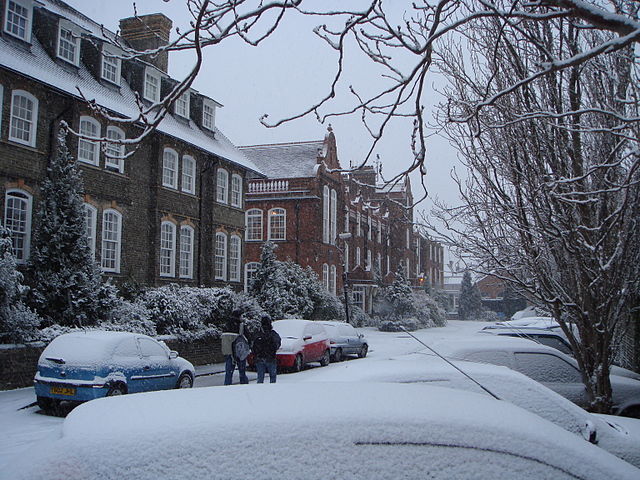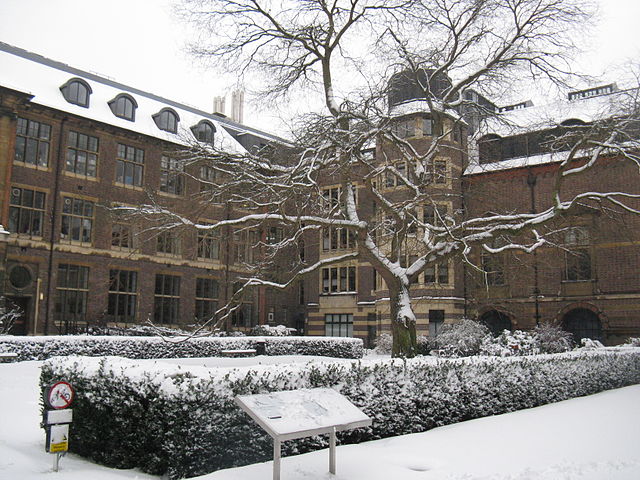Thammasat University students are cordially invited to participate in a free Zoom meeting on rethinking urban nature.
Natura urbana: ecological constellations in urban space is organized by the Department of Geography, Faculty of Arts, Chulalongkorn University.
The TU Library collection includes several books about different aspects of urban geography.
The speaker will be Professor Matthew Gandy, Ph.D. of the Department of Geography, the University of Cambridge, the United Kingdom.
His faculty homepage states:
Matthew was born in Islington, North London. He is a cultural, urban, and environmental geographer with particular interests in landscape, infrastructure, and more recently bio-diversity. The historical scope of his work extends from the middle decades of the nineteenth century to the recent past. His research ranges from aspects of environmental history, including epidemiology, to contemporary intersections between nature and culture including the visual arts. His book Concrete and clay: reworking nature in New York City (MIT Press, 2002) was winner of the 2003 Spiro Kostof award for the book within the previous two years “that has made the greatest contribution to our understanding of urbanism and its relationship with architecture”. His book The fabric of space: water, modernity, and the urban imagination (The MIT Press, 2014) was awarded the 2014 AAG Meridian Award for Outstanding Scholarly Work in Geography and the 2016 award for the most innovative book in planning history from the International Planning History Society. He is Principal Investigator for the ERC Advanced Grant Rethinking urban nature.
Writings by Professor Gandy are in the TU Library collection and also available to TU students through the TU Library Interlibrary Loan (ILL) service.
The event will be held on Wedesday, 20 April 2022 at 7pm Bangkok time.
The relevant Zoom link is here.
Professor Gandy’s research in rethinking urban nature involves these themes:
- New approaches to urban ecology
- Post-humanism and different conceptions of agency
- Epidemiology, insect vectors and the political ecology of water
- Wastelands and urban bio-diversity
- The role of aesthetics, landscape and “non-design” in urban space
- Intersections between marginal spaces and cultural practice
The theoretical aspects of the project were developed through a series of case studies based primarily in London, Berlin, Tallinn, and Chennai.
As Professor Gandy informed an online interviewer in March,
I think one of the really special things about these marginal spaces of nature in cities is that they very often contain plants from all over the world. I use this term cosmopolitan ecologies to emphasize that these accidental gardens are really global gardens, and they show the interconnected nature and human culture, not just now but through history.
In the streets of Berlin you have 19th century escapes from the [Schöneberg] botanical garden just growing by the side of the street. It’s very interesting to me that a plant in the 19th century, that people held in a special part of a botanical garden with a label — and then forgot about — has reappeared and happily propagated itself within the heart of the city. I think for me, the notion of urban botany within the city kind of brings the city to life because there are so many interesting stories that are revealed by looking at individual plants.
Then you have urban political ecology. In simple terms this involves “following the money” behind environmental destruction and also addressing specific power structures that contribute towards environmental degradation such as racism, corruption and state violence. It raises questions about urban social movements, and whether some neighborhoods have limited access to green spaces, or nature.
There’s also thinking about taking the non-human seriously. How do we bring plants, animals and non-human forms of life into the heart of our thinking about who or what has the right to live within the urban space?…
We can see some shifts in political and environmental discourse in particular cities. Berlin, and especially the island city of West Berlin, played a pivotal role in the post-war emergence of urban ecology and urban botany as distinctive scientific fields. For many years, grassroots campaigns [have worked] to draw attention to the very high level of biodiversity in these wild spaces in cities.
Around 2000, one of the first urban nature parks was created in order to protect [a defunct railway yard from the late 19th century] based on its very unusual selection of plants and invertebrates. So scientific evidence was used successfully to lobby politicians to create a new kind of park, rather than just another site to be developed. More recently in Berlin, there are some other very interesting new park designs where fragments of these spaces of wild nature are being left alone or integrated into the park design.
The politics of land use can also get very fraught; the term “land grabbing” is also used quite often in this context. An example is the Khimki forest north of Moscow, where environmental activists have been brutally attacked [for protesting deforestation efforts]. This exposes the degree of violence directed towards nature and its defenders, and in contemporary global geopolitical context, that violence connects with wider geopolitical concerns.
Detailed knowledge about nature can also help to protect specific sites, highlighting the presence of very rare species, for example, or a vulnerable ecosystem, and preparing knowledge that is sufficiently robust in scientific terms to be be used as legal instruments against threats to specific sites or species….
Poor neighborhoods or ethnic minority neighborhoods in cities are often much more poorly served by access to parks and public space than richer neighborhoods. And for people of color, some parks and public spaces do not feel very safe or welcoming, and often this is even more the case if people travel outside of cities to rural or non-metropolitan spaces of nature. Therefore, urban nature in the heart of the city is much more open to a diverse public.
For example, I was a bit skeptical about the purpose of designating London as a National Park City, but talking to people from the [social justice group] Black Environment Network, they made very clearly the point that spaces of nature in London are much more accessible to people of color [than spaces outside the city], so they were very interested in supporting this initiative to emphasize green space within the city. Another point to make is that nature in the city is never neutral. The presence of particular plants or animals can provoke very polarized reactions. In the case of Milan, African trees were attacked because they’re seen by far-right political activists as a potential Africanization of an Italian city — of course, absurd. But nevertheless, this presence of xenophobia in relation to aspects of urban nature is a very real phenomenon. That’s that’s why in the book, I emphasize the significance of cosmopolitan ecologies as different ways of not just conceptualizing nature, but also human societies as well.
(All images courtesy of Wikimedia Commons)



